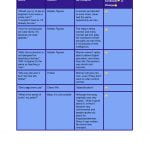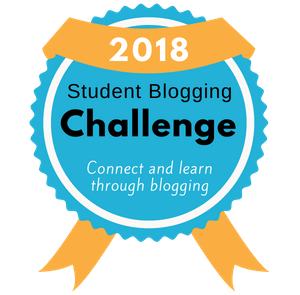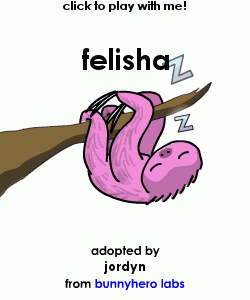Alright friends! Well that’s a half a year’s worth of work completed! Glad I can check that of the list. After I completed my last project about the Old Dollar Mill, it was time to move on, so our PLP 11/12 class made our way over to Ms.Willemse’s classroom where all of the learning and magic took place. The learning we do with Ms.Willemse is very magical, you will see. Ok, back to the point of this blog post….. the project! Let’s start with a game, actually a Choose your own Adventure to get an idea of what this unit was all about! Imagine you are a bit of a feisty woman, one who speaks their mind, and you are born in the Elizabethan era, ok? You with me? Now, decide if you are to be married or not. Choose Paragraph One to be married and Paragraph two to stay unmarried. Have fun!
(I had to include it somewhere Ms.Willemse, it couldn’t go to waste.) Surprise! It didn’t matter which story or path you chose to take. They both ended in the same way. All women in the Elizabethan era NEEDED to be tamed, there was a standard they had to live up to and if they didn’t, men and the society they dominated would force you into that mold. A great example of this, written by the magnificent William Shakespeare, is the play, The Taming of the Shrew. This brings me, perfectly, to our focus, driving question:
How can we use our study of the taming of the shrew to understand how much, yet how little, has changed for women?
As long time My Dog Ate My Bloggers, you know that the driving question almost marks the end of the introduction, but before I begin explaining what I have learned about the treatment of women over time, I should probably introduce the curricular competencies:
I will be connecting different parts of the project to each one and what I believe I learned about it. With out further a due, let the post begin!
HIGHLIGHT OF MY LEARNING/EYE OPENER
To begin our learning about Continuity and Change, we watched three videos that, honestly, changed my whole perspective of treatment of women. These videos span from the seventies to the nineties and were shown on LIVE TELEVISION! I will put them down below so you can watch them for yourself and understand why I am so outraged. Actually, it’s more like why I was outraged, I’ve done a lot of thinking since I have watched these videos:
(Disclaimer: Unfortunately I couldn’t find the Sex and the City example we watched in class). The subject matter they cover, the way they speak about women and for what(!!), blows my mind. These are the three videos I continued to come back to for reference as I believe they show a great deal of continuity and change in the world of women. The fact that in all of them they call women sluts or themselves a slut is something that was continuous, that carried on through out each clip and each decade. But I was quickly able to identify what changed. It seemed the meaning or at least the intention of the word and the way it was used had changed? I felt like I needed to do more investigating about the twenty first century and how the word slut is used today to understand how much things changed. I watched, what was a brand new show in October, Grand Army, A Netflix TV show developed from a theatre production called Slut: The Play. I was able to identify that, although women were still being chastised for their sexuality, the meaning had changed yet again.
Slut has become a word to raise awareness surrounding rape culture and slut-shaming which are huge topics that not only affect victims, but everyone around them. I wrote a blog post all about it if you want to check it out!
Now, with these 4 different pieces of media evidence, I knew exactly what I wanted to write about for Milestone One: The Academic Conclusion. Honestly, the Academic Conclusion was not my proudest learning moment (it was a F.A.I.L) and not something I found super super significant on it’s own. The reason I am including this information in this blog post is to show my growth since the Academic Conclusion I wrote and how it helped me navigate my ideas.
As you may know, in PLP (the program I am in) we use the proficiency scale which is based on 4 different weather emojis to understand what grade our work reflects.

After some feedback, I received a sun on this assignment which I was happy with! But I knew I could do more. That is the thing with me, and a lot of us in PLP. I feel like we all strive to do our very best, we are always trying to improve. The question I asked myself at this point was, “Have I applied a variety of strategies to comprehend texts and express an understanding of how texts use features?” The answer to this was no!! So I continued to add to my toolbox of texts and sources throughout Milestone Two (which I will talk about later) and Milestone 3.

Unfortunately, I was sick at home during this Milestone which made it impossible for me to present this poster with my wonderful group: Giorgia, Tamara, and Marshall. But what was so valuable to me about this Milestone was the research I did about women’s fashion in the eighties. I was able to comprehend the different websites and texts that I read and viewed and gather that a huge influence on women was was media. I connected the dots between beauty standards, fashion trends, celebrities, and music and that lead me to MTV. MTV was created in 1981, showcasing hot, popular new music videos. Although this was a great invention, we quickly saw an obsession with aerobics and a spike in anorexia diagnoses. Why was this? At this moment, my thesis statement was born.
Many people may believe that women have risen above sexism and oppression, that the age of “taming” mothers, wives, and daughters has come to an end, and that men do not, presently, control female societal roles. Television shows, song lyrics, and other forms of media from the through out the twentieth and twenty-first centuries suggest otherwise.
Once we finished reading Taming of the shrew in class which, let me tell you, was not easy, it was time to organize our thoughts and design the text that would become our essays. Here is a voice recording of me struggling to read one of Lucentio’s lines which was not only somewhat old english, it was also in Latin!!
TA DA! You guessed it (well actually I told you) our final project is an essay!! Ok, back to how I designed it.

Here is the front page of my organizer and how I designed my essay
This portion of the project was probably my strongest and also very important, critical actually, to the success of my essay. With the help of Milestone two, where I organized all my sources, I was able to organize my essay and design the layout quite easily. I connected each piece of my argument to different quotes, history, and plot points of Taming of the Shrew.
In milestone 2, we gathered quotes from tons of different sources so in the end it looked something like this:
Hidden Figures, Commonlit Readings, Essay Reading, along with many others are what my essay is made up of! This is a really important part of the competencies Using Resources, and Use Evidence from Various Sources. As you can see from my chart, I have a very large variety of sources that I used through out my essay!
And then it began. The revision process. For anyone that has read my blog posts before, you know that in PLP we revise and revise and revise some more. So after probably three rounds of revision directly from Ms. Willemse, this was the final product!
I am really proud of how it turned out and I believe it shows a lot of growth from the beginning of the project, Milestone 1, since I received a rainbow o after several suns. It is a really great reflection of everything I learned in the entire unit and even I can identify that. I knew from the moment I started writing the Academic Conclusion that media was going to have a huge part to play in the taming of women over time and I gathered tons of evidence from many different sources (TV shows, Music Videos, Essays, Academic Journals, etc.). It is almost tangible, the amount of knowledge I gained from this project. I was excited to come to class everyday and learn about the injustices against women and how this has changed since Bianca and Kate’s time, or Shakespeare’s time I guess. It is really hard to tell if Shakespeare was a sexist, but in the end, I believe he was not. it may seem like it now, it may seem like his goal, along with many other men, was to tame all women, like they were trying to be evil. But after all of this research, I can conclude that it is all about how we look at it. We have to take historical perspective and understand that this was just how it was at the time, there was no way to get around it. This sexist ideal has continued into the twenty-first century, women are still tamed, not necessarily by men, but by the media and society’s unmeetable standards.






















Leave a Reply